April 25, 2024
‘Do Your Job, EPA’: Stories From the Frontlines of Coal Ash
By law, before government regulations are adopted or changed, agencies must ask the public — you — to weigh in.

After years of litigation and advocacy, the U.S. Environmental Protection Agency finalized regulations to address dangerous gaps in safeguards from toxic coal ash waste. The agency issued the regulations on Apr. 25, 2024, as part of a legal settlement with public interest groups represented by Earthjustice.
Half of all coal ash dumps in the U.S. — hundreds of sites in 41 states — had been exempted from monitoring and clean-up, because of gaps in protections.
What is coal ash?
Coal ash is the toxic, carcinogenic waste left behind when power plants burn coal for energy.
The rally at the Chicago hearing was organized by Just Transition Northwest Indiana, Climate Justice Alliance, Chicago Jobs with Justice, Clean Power Lake County, Neighbors for Environmental Justice, The Little Village Environmental Justice Organization, Sierra Club, NRDC, Southern Environmental Law Center, and Environmental Integrity Project.
Tens of thousands of people, including 29,000 Earthjustice supporters, submitted written comments to the EPA when the agency proposed the regulations.
When the public responds with a huge outpouring of support for environmental protections, they serve an important role in shaping the rules our government creates — ensuring those rules are fair and effective, and powerfully countering the influence and money of industry lobbyists.
Your stories are your power.
At the Chicago hearing in the summer of 2023, people came from across the country to face the EPA and share their stories.
Among the them were Betty Johnson, wife of the late Tommy Johnson, one of the first responders to the Kingston, TN, coal ash spill; Julie Bledsoe, whose husband Ron Bledsoe also worked on the Kingston cleanup; Susan Wind, whose daughter was diagnosed with thyroid cancer; and Vickie Simmons, of the Moapa Band of Paiute in southern Nevada.
Watch a video from the day of the hearing:
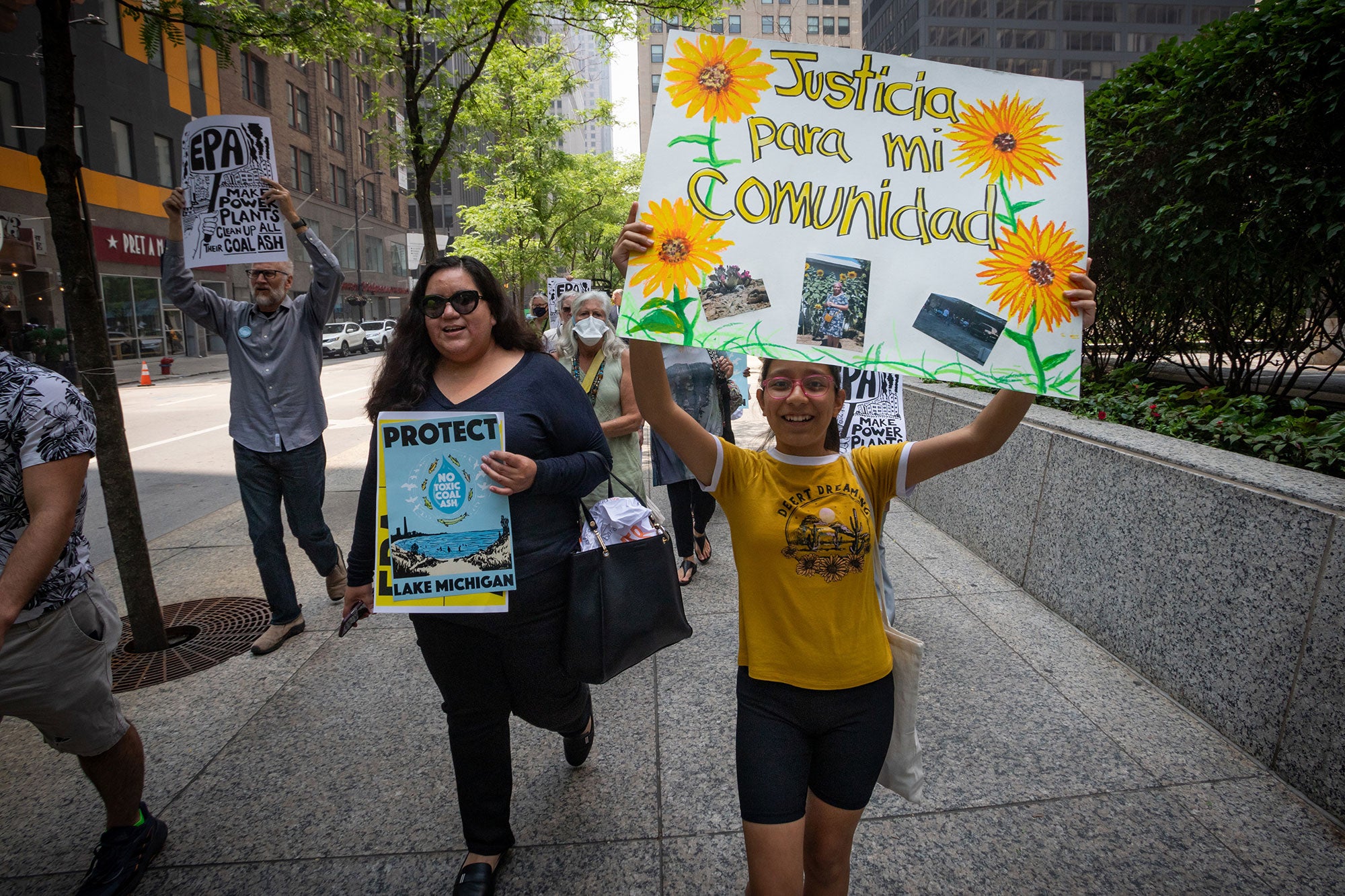
And, read additional stories and testimony the EPA heard that day in Chicago:
Vickie Simmons
Moapa Band of Paiutes, Nevada
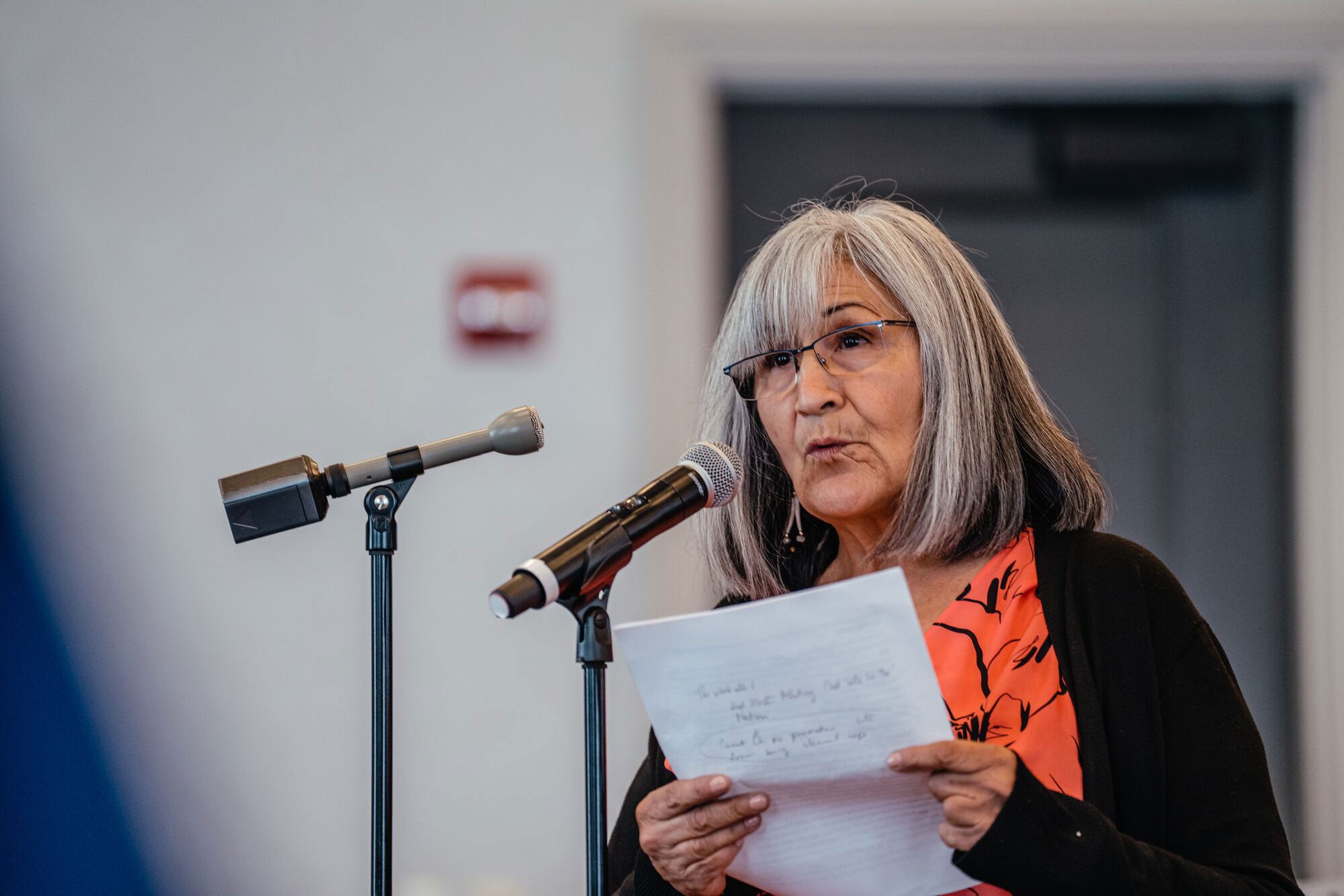
Vickie Simmons is a member of the Moapa Band of Paiutes. For decades, the Tribe has endured severe coal ash pollution from the second most-contaminated coal ash site in the U.S., at the former Reid Gardner power plant.
“My tribe of 350 members is in the southern Nevada desert and right next to the now-decommissioned Reid Gardner coal-fired power plant — with their homes being less than one fourth of a mile from the once-operating smoke stacks and within 500 feet from the evaporation ponds.
“I began to realize that my brother might still be alive if he did not work at the coal plant, and just how many people were sick in my community.
“I wish I wasn't the only one left living to make this testimony.
“I'm getting old, but still I'm coming because we need that plant cleaned up. Where was the EPA then, and where is the EPA now? We want the [coal ash] landfill on top of the mesa that looms over us gone.
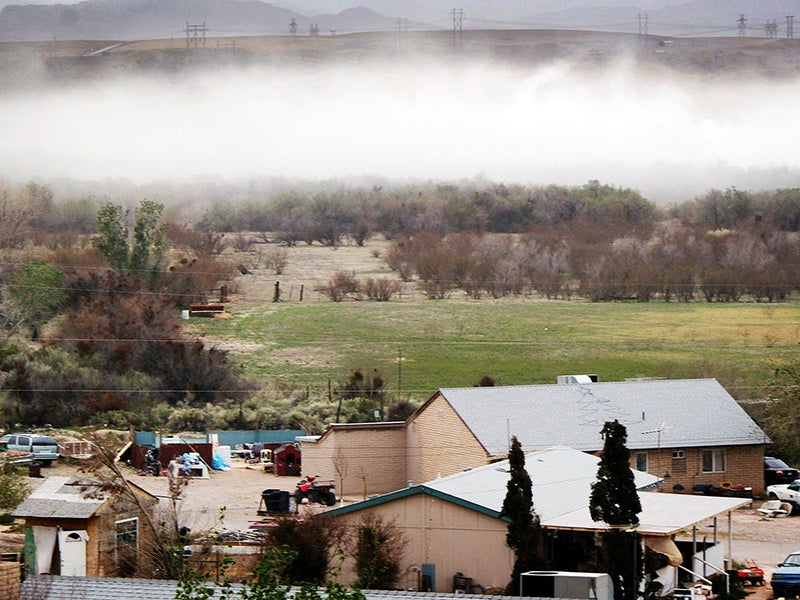
“We're asking for assistance with continued cleanup. The Reid Gardner power plant is overwhelming for such a small community.
“I want to recognize my small Tribe for putting clean energy on the grid, producing over 750 megawatts of clean solar energy. Thank you.”
Vickie Simmons previously served as Tribal Chairman and environmental liaison for the Moapa Band of Paiutes.
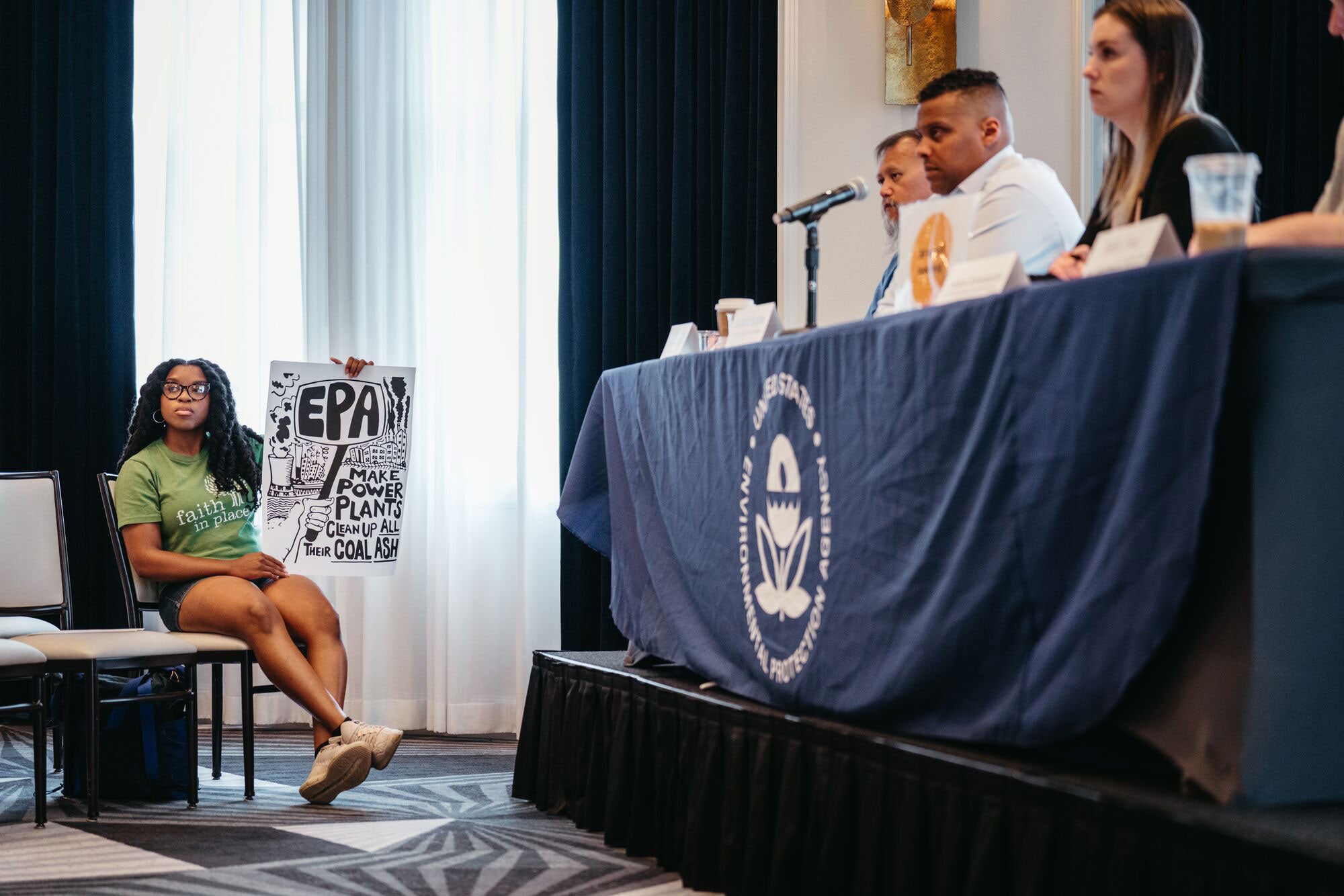
Dean Naujoks
Potomac Riverkeeper, Maryland
Dean Naujoks is the Potomac Riverkeeper, working to protect the public's right to clean water in the Potomac River.
“I wish you could understand how many lives have been crushed by coal ash.
“This is a national problem. We got coal ash everywhere. And meanwhile, all these utilities all around the country are actively working to close these ash ponds using very weak coal ash rules.
“Unless groups like ours come in and enforce the issue and work with citizens and use the Clean Water Act for enforcement, we're not getting the type of cleanup that we should be seeing.
“I’ve worked on coal ash in three states. And I keep seeing the same problems.
“You need to strengthen these rules, because even what you're proposing now doesn't go far enough. We're finding coal ash throughout the whole watershed.
“With coal ash, there's actually a solution for cleaning up that’s in your rules — and you're not enforcing it. These bullying utilities didn't even care to show up today, because they're afraid to show up and stand and watch these people talk about their lives being ruined.
“You have the ability to actually do something about that. So I hope you'll stand up to these utilities, and start telling 'em it's time to clean up all this toxic coal ash.
“Just do your job, EPA.”
Dean Naujoks also served as the Upper Neuse Riverkeeper and Yadkin Riverkeeper.
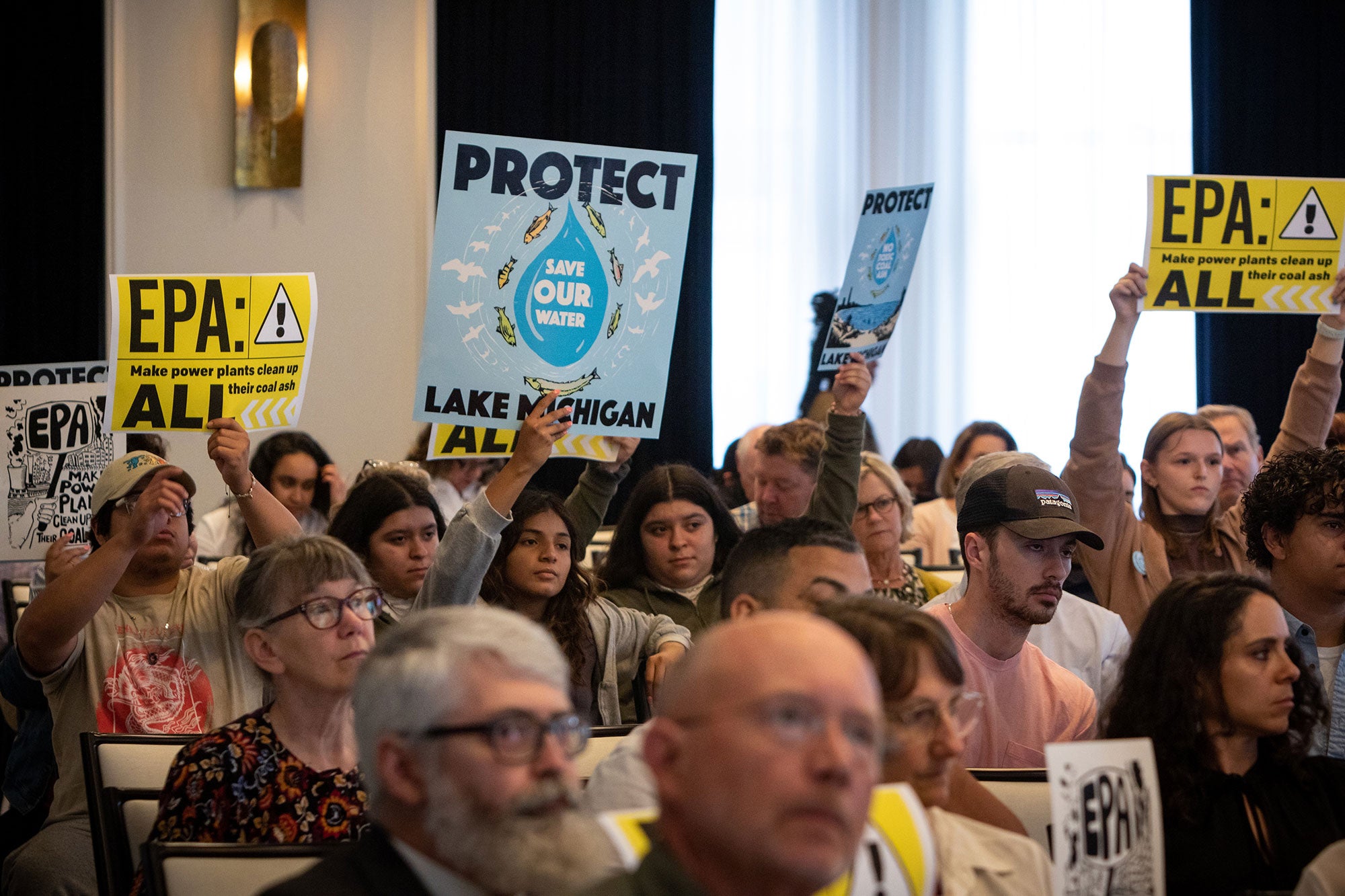
Susan Wind
North Carolina
Susan Wind’s teenage daughter was diagnosed with cancer when the family lived in Mooresville, N.C., where coal ash had been used for years as fill for roads and commercial developments.
“Try imagine moving your family to a town (to raise your kids) and learning that the area used coal ash to build it (not safe soil).
“I was dismissed by politicians when trying to address this issue. It was an inconvenience to them. They all used this line to fall back on: ‘The EPA says coal ash is non-hazardous. Therefore it is safe.’
“It is ludicrous that even today we allow this coal ash to be used anywhere with no independent studies, no national database to track where it is going.
“You allow the polluters to self regulate. You allow the regulators to be in bed with the polluters.
“The EPA is supposed to protect the environment.”
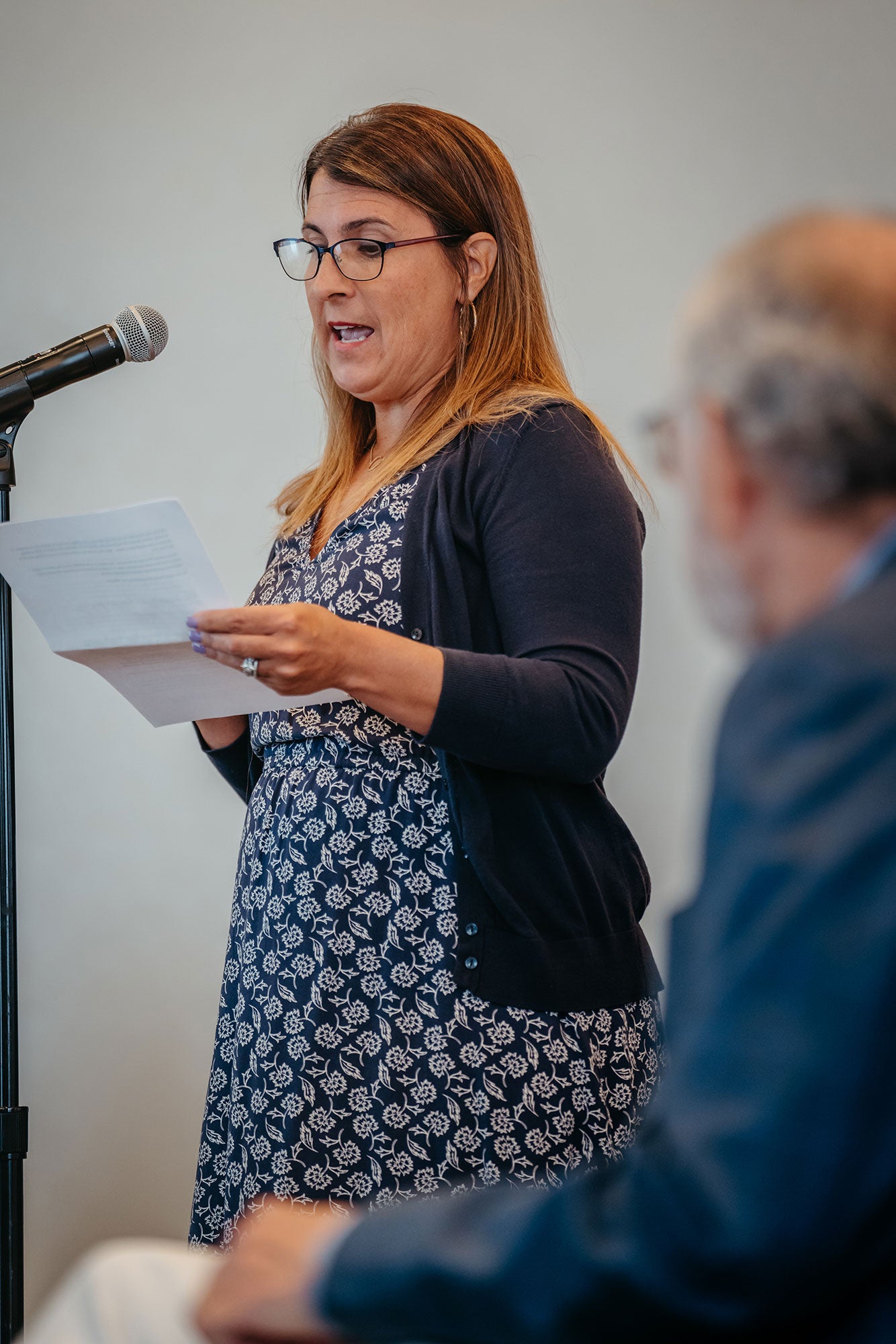
Betty Johnson
Kingston, Tennessee
The mother of two daughters, Betty Johnson is the widow of the late Tommy Johnson, one of the first responders to one of the nation’s largest toxic disasters, the massive coal ash tragedy at the TVA Kingston Fossil Plant.
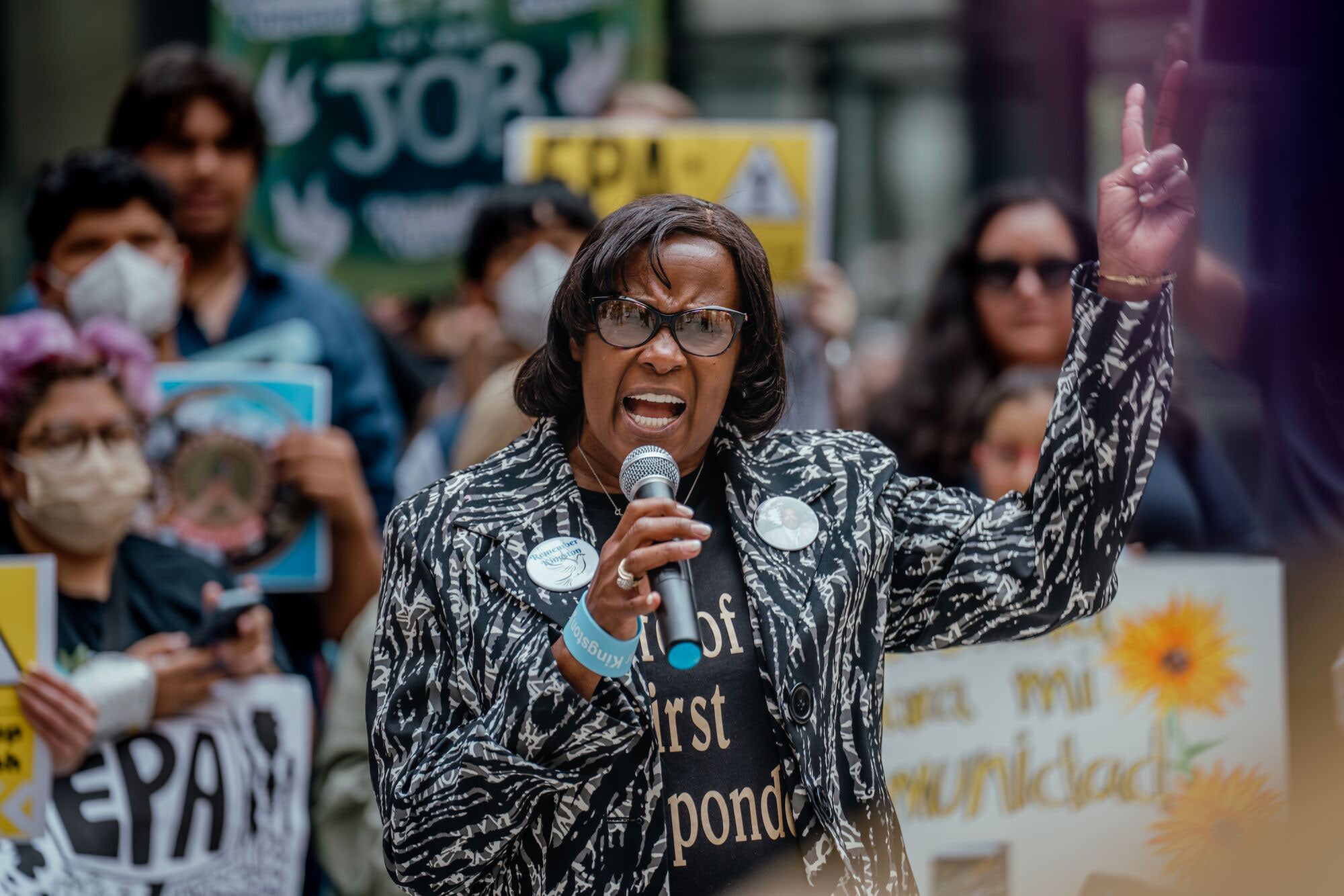
In 2008, more than 1 billion gallons of coal ash sludge burst from a dam at the Tennessee plant, sweeping away homes and contaminating two rivers with toxic coal ash.
Tommy Johnson passed away on May 18, 2023. He was among hundreds of workers who battled severe illness after working to clean up the coal ash disaster.
“I want to warn people about coal ash,” Johnson told Grist in an interview about EPA’s proposed coal ash regulations in the weeks leading up to the public hearing. “People don’t realize how dangerous it is.” Johnson told her story to EPA officials in Chicago.
Julie Bledsoe
Kingston, Tennessee
Julie Bledsoe also traveled to Chicago to speak her testimony to the EPA in person. Like Tommy Johnson, Bledsoe's husband Ron and brother-in-law Doug worked to clean up the aftermath of TVA’s Kingston coal ash disaster. Both experienced severe declines in health after working among coal ash.
Three years ago, Julie Bledsoe lost her brother-in-law to cancer. Ron Bledsoe continues to experience health impacts from coal ash exposure.
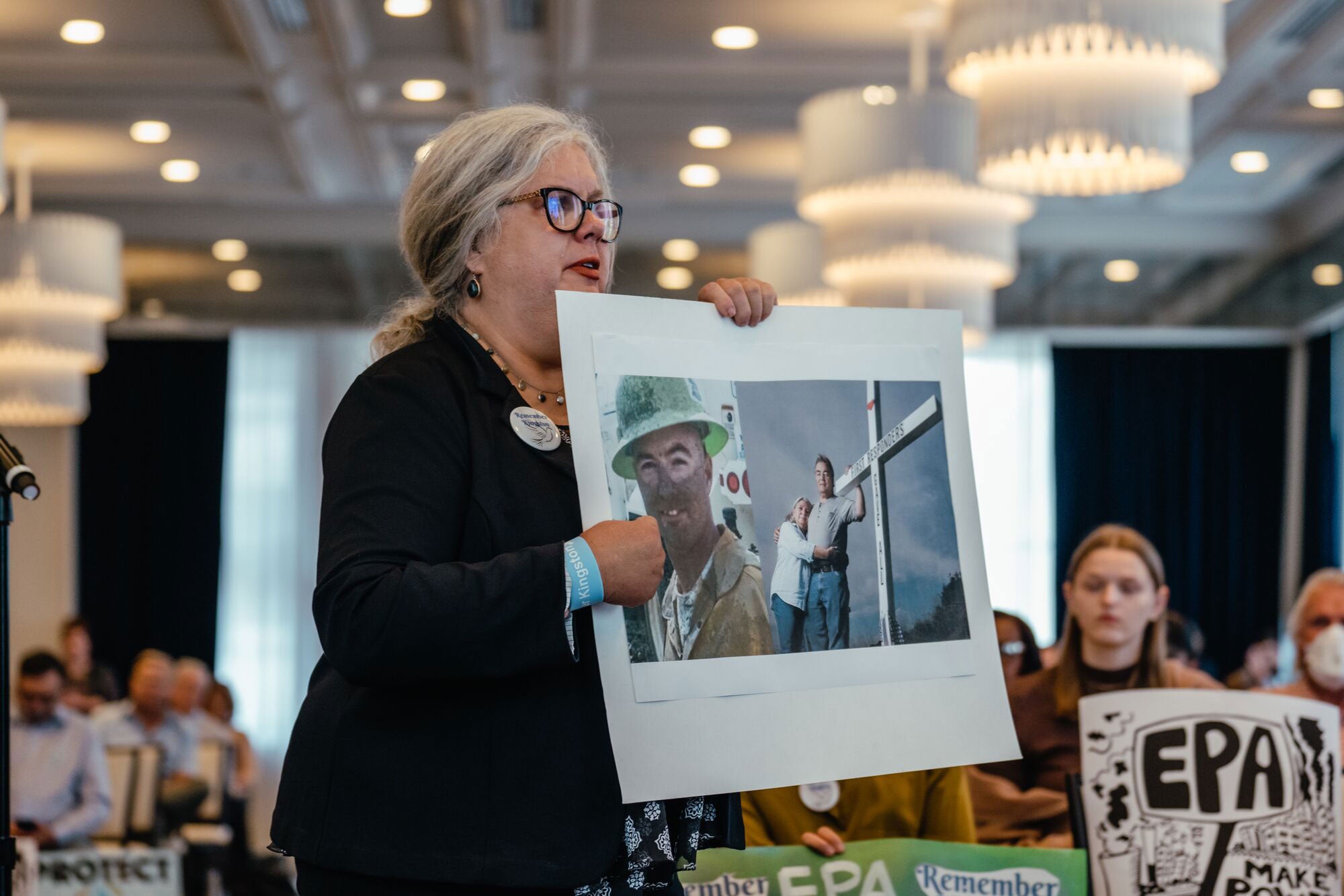
Donnita Scully
Environmental Climate Justice Chair, LaPorte County, NAACP
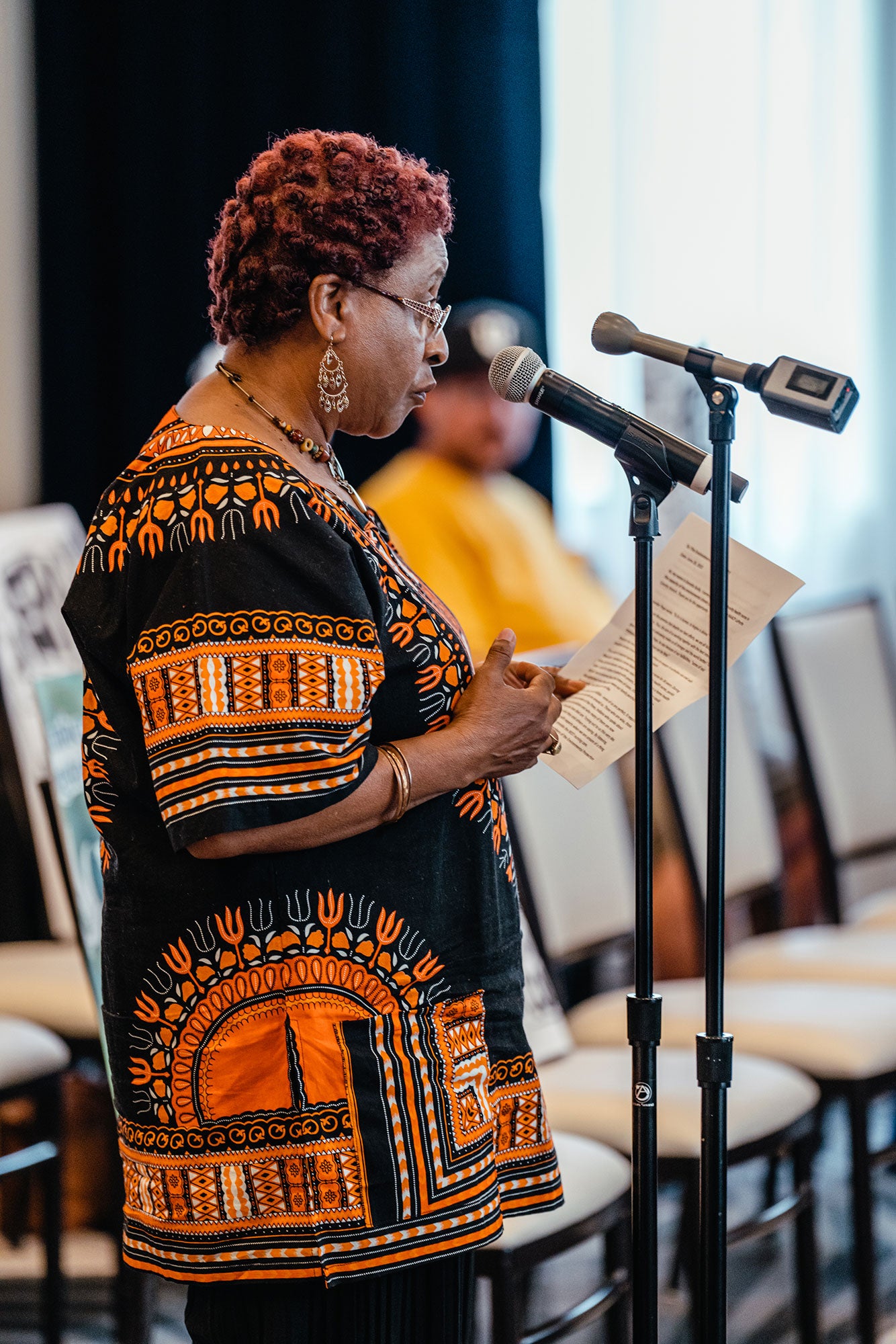
In Indiana, groundwater under sites where the Michigan City Generating Station dumped coal ash is contaminated with levels of arsenic up to 50 times the federal maximum contaminant level for drinking water. Donnita Scully addressed the EPA directly in Chicago:
“I’ve been a nurse for 36 years. During these years, I worked as a home health nurse, community health nurse, parish nurse, and nurse educator, among others.
“I cared for clusters of patients with cancers, and wondered how could this be? I was so concerned about the clusters of cases, that when I moved in the neighborhood where these patients were, our family purchased and drank bottled water — from 1993 until this very day.
“As nurses, we learn: Because we are fallible, none of us are perfect — it requires us to listen and learn from those who are around us. Those who are wise, those who are experts, and those members of the Pines, Indiana, who spoke about their experiences with coal ash pollution and who many of them are now deceased.
“By listening — and really hearing — and in consultation with experts when we are unsure of a thing, is how I taught my nursing students to provide the best nursing care.
“Furthermore, I believe, this is how you members of the Environmental Protection Agency can render the best coal ash rule! So, I commend you for holding this meeting today!
“How can we cope with our fallibility and frailties?
“First, by recognizing we have them.
“Second, by providing safeguards. We request you extend the coal ash rule to all legacy coal ash sites.
“Third, by us all working together as one to provide oversight of the rule.
“The sum of us working together with the best interests of the vulnerable and unknowing, makes us all stronger and the world better!”
Donnita Scully is the environmental climate justice chair for the LaPorte County branch of the NAACP in Indiana.
Cathi Murray
Town of Pines, Indiana
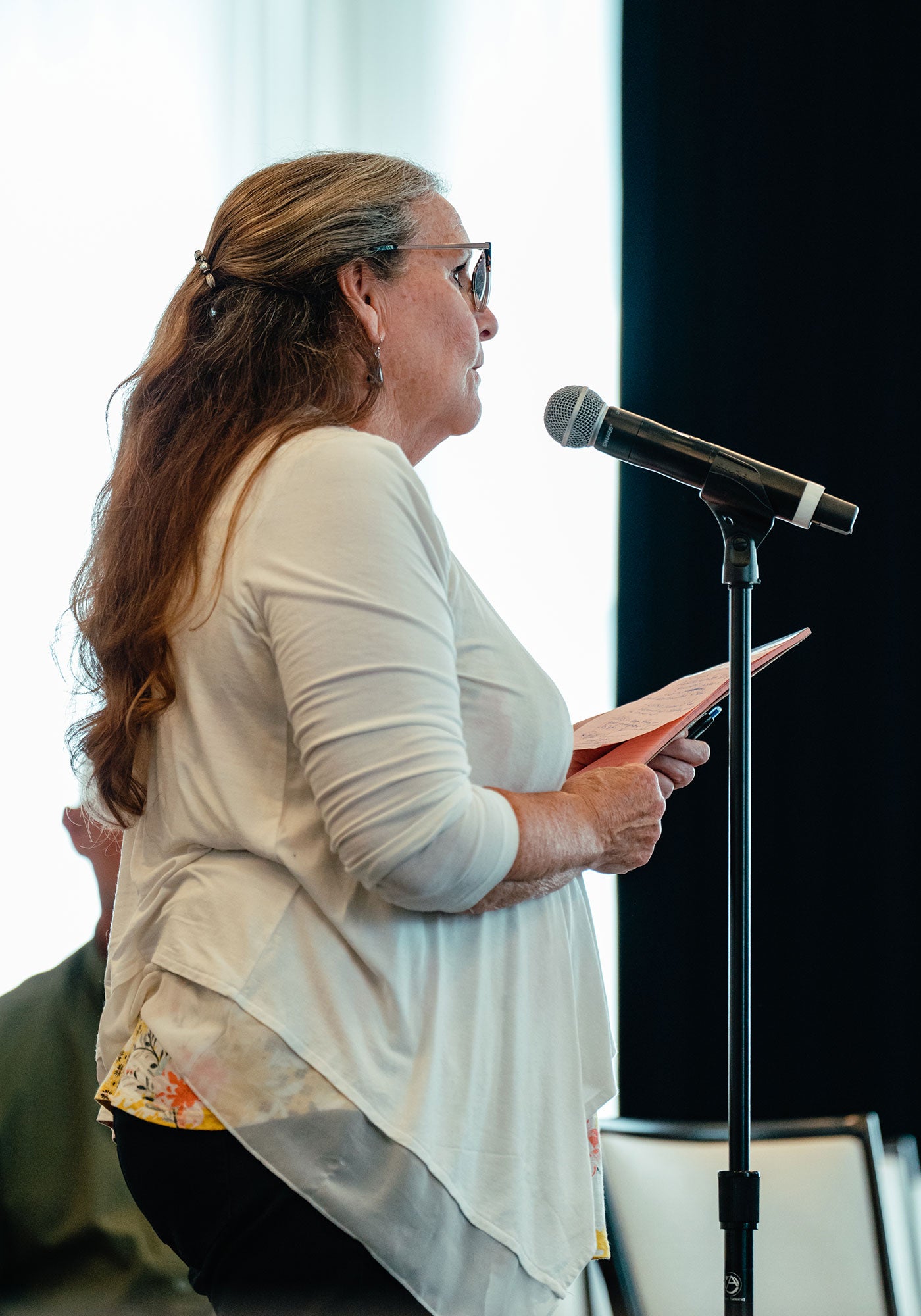
In 1990, Cathi Murray moved to the Town of Pines in Indiana.
“We never expected that our beloved town would become an Alternative Superfund Site in 2001,” said Murray, in an earlier interview with Earthjustice. “The area is welcoming, peaceful, and picturesque; the perfect place to raise a family.
“However, our groundwater, surface water, soil, and air has been contaminated by coal combustion waste from a coal-fired power plant located just a few short miles from the town.”
The Town of Pines is the site of the most widespread known drinking water contamination from coal ash, as a result of a leaking coal ash landfill and coal ash used as “fill” throughout the town.
Arsenic, boron, molybdenum, and lead were among the contaminants found in drinking water and groundwater.
Coal ash is known to have contaminated drinking water at least 25 other sites in the United States.
Murray spoke about her experiences with coal ash directly to the EPA at the agency’s public hearing in Chicago.
Paul Kysel
Town of Pines, Indiana
“I am a resident of Pines Township, Indiana. My family and I moved to our rural home in 1990 after determining that our health and safety were at elevated risk at our prior home, which was located less than a ½ mile from the Michigan City NIPSCO generating station.
“At the time of our relocation, we were unaware that a large legacy repository of coal combustion waste was less than a mile distant.
“A few years later that we learned that the real danger to our drinking water lay in the heavy metals leaching out of the one million tons of coal ash deposited in Yard 520.
“Our community knows that the tons of coal ash that NIPSCO is planning to leave behind when it fully decommissions its nearby Michigan City generating station pose a certain risk to the drinking water that Lake Michigan represents to the estimated 40 million residents who depend upon it.
“If there is one lesson learned during the flawed Yard 520 Alternative Superfund process, it is this: Coal combustion wastes, when exposed to water long enough, will leach out the heavy toxic metals concentrated in it. These toxins will move, concentrate, and damage the local environment and pose a certain risk to the health of those living nearby.
“I ask that U.S. EPA put the safety, health, and welfare of the public ahead of the profiteering of utilities and industries potentially impacted by their regulations.
“NIPSCO’s parent, NISOURCE posted a profit of $530 million last year, and yet NIPSCO has had the audacity to both pursue significant rate increases this year as well to request permission from the Indiana Utilities Commission to classify its cleanup of the Michigan City generating site as routine maintenance, thus allowing it to pass along the costs of any cleanup directly to its ratepayers.
“U.S. EPA’s mission statement says it all: 'To Protect Human Health and the Environment.'
“To this end, please close the regulatory gaps created by the 2015 Coal Ash Rule and require it to include all legacy coal ash deposits.”
Paul Kysel served as president and vice president of the P.I.N.E.S. (People In Need of Environmental Safety) organization.
Kristine Kysel
Town of Pines, Indiana
“Citizens should feel protected by the Environmental Protection Agency. However, we must beg our government to care for people over profit. Beg toxic polluters to clean up the toxic waste they left while becoming wealthy.
“Coal ash was always a problem. Before they had scrubbers, the ash drifted into the sky and caused acid rain. That was changed to bring us a different kind of toxin: Coal ash.
“NIPSCO must clean up all of their mess. Please enforce the laws, and force coal ash to be cleaned up by the perpetrators of this mess, not by taxpayers. Do your job.”
Kristine Kysel is a resident of the Town of Pines.
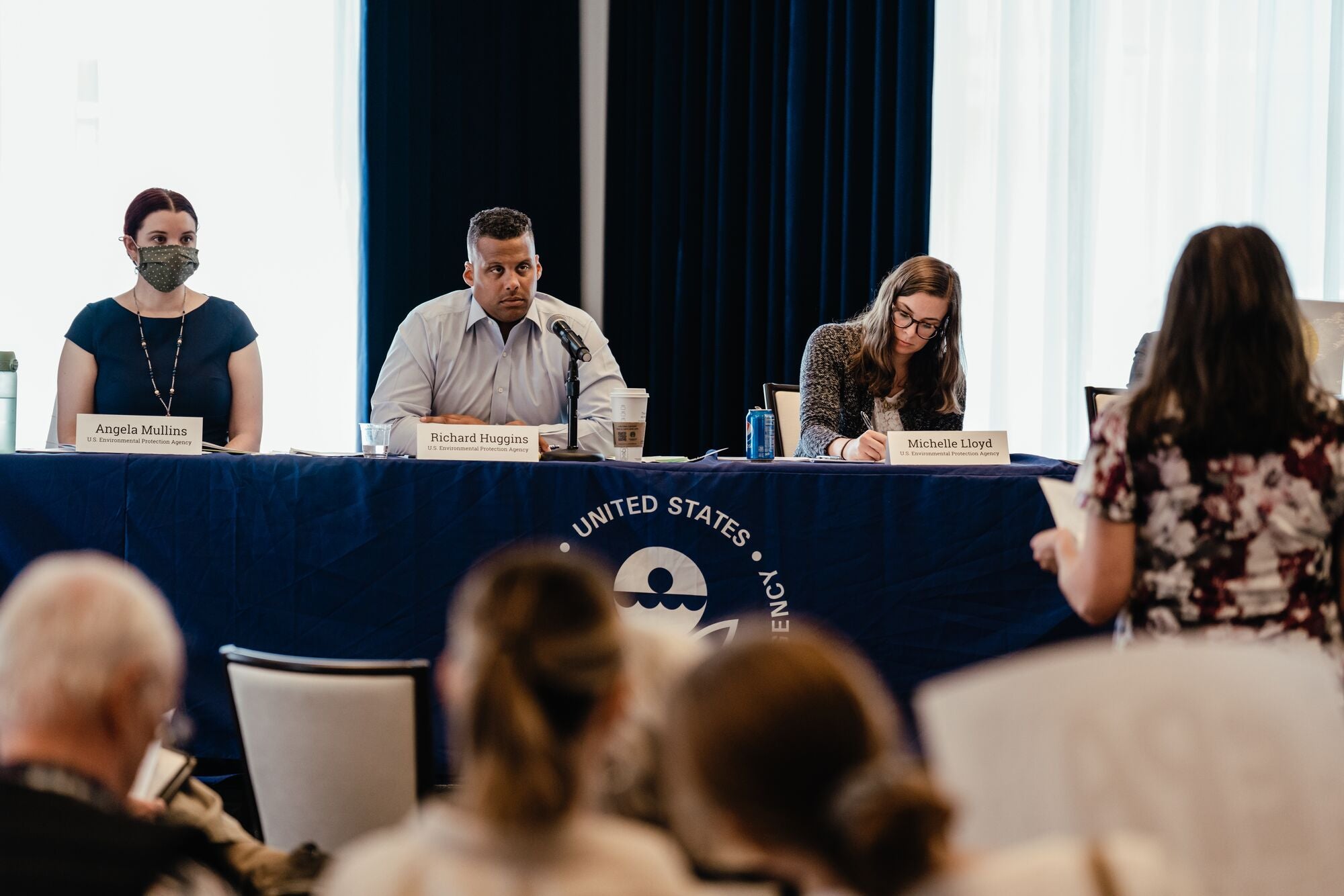
Delfina Anchondo
Lytle Ranch in Moapa, Nevada
“I thank you for allowing me to speak today. Your willingness to listen to the public is greatly appreciated.
“We are a Latino community made up of some of the first families to arrive in southern Nevada to work in the early dairy and seasonal farm work industries.
“But more important for today, we are a community currently in the fight for our lives against environmental injustices.
“We were polluted by the now decommissioned Reid Gardner Power Station operated by Nevada Energy, once named the dirtiest plant in America.
“I want you to know that in Lytle Ranch we have an entire generation of people who have either died of cancer, have cancer, or are ill.
“My own mother died of cancer. My younger sister now has the same cancer. Both lived in Lytle Ranch for over ten years during the life of the Reid Gardner plant.
“There are also a number of women in my community who either had to have hysterectomies, struggled to have children, or were not able to have children. This is true for me and all of my sisters.
“I want you to know that in my family on both my maternal and paternal sides there was no history of cancer or infertility until now.
“You have to look no further than Lytle Ranch to see the impact of coal on climate and a community's health.
“And while my mother is already dead and I and my sisters may never have children, it’s not too late for the future generations.
“I ask you today to please side with communities like mine over companies that for too long received a free pass to harm not only people but the environment.
“The EPA must close the loopholes that exist. The EPA must also enforce regulations. For Lytle Ranch, I want to be certain a complete and thorough cleanup was conducted of the Reid Gardner site under the current CCR rule.
“I ask this for my community in Lytle Ranch whose lives are in danger as I stand here today because make no mistake, we have been left here to die.”
Delfina Anchodo is the president of LULAC Council #11158. and a Moapa Valley Latino community advocate.
Fred Tutman
Patuxent Riverkeeper, Maryland
Fred Tutman is the Riverkeeper for the Patuxent River, the largest and longest river entirely within Maryland. He works to protect, conserve, and replenish the Patuxent River basin and for the people who rely on its future.
“My family has lived in Maryland since the 1700’s,” Fred Tutman told Earthjustice, on why he fights for clean air and clean water.
“Coal emissions and air deposition have contributed to a decline in air quality and contributed to respiratory problems among communities in the region. My home county absorbs a disproportionate share of environmental and toxic health issues.”
Tutman spoke about his experiences directly to the EPA during the public hearing in Chicago.

What happened next?
The EPA considered all comments — submitted by you and by Earthjustice’s attorneys and expert analysts — on the proposed regulations that extend federal monitoring, closure, and cleanup requirements to hundreds of previously excluded older coal ash landfills, legacy ponds, and fill sites.
Under the legal settlement between the EPA and public interest groups, represented by Earthjustice, who sued the agency in 2022, the government was required to take final action by May 6, 2024.
And, in a huge victory for communities living near coal ash plants, the EPA issued a final rule on April 25, 2024, that closed the loophole that had left over half of coal ash exempt from federal clean-up requirements.
Now that the EPA requires effective cleanup of coal ash at power plant sites, the agency must move quickly to enforce the rule and stop the flow of toxic releases from hundreds of leaking coal ash dumps
Earthjustice and our allies continue to fight in the courts and statehouses for solutions to and strengthened protections from the toxic menace of coal ash.
The EPA is no longer accepting comments on these coal ash regulations — but there are many other public comment periods and advocacy campaigns where you can add your voice. Save the quiet for the wilderness. In the public arena, we roar.
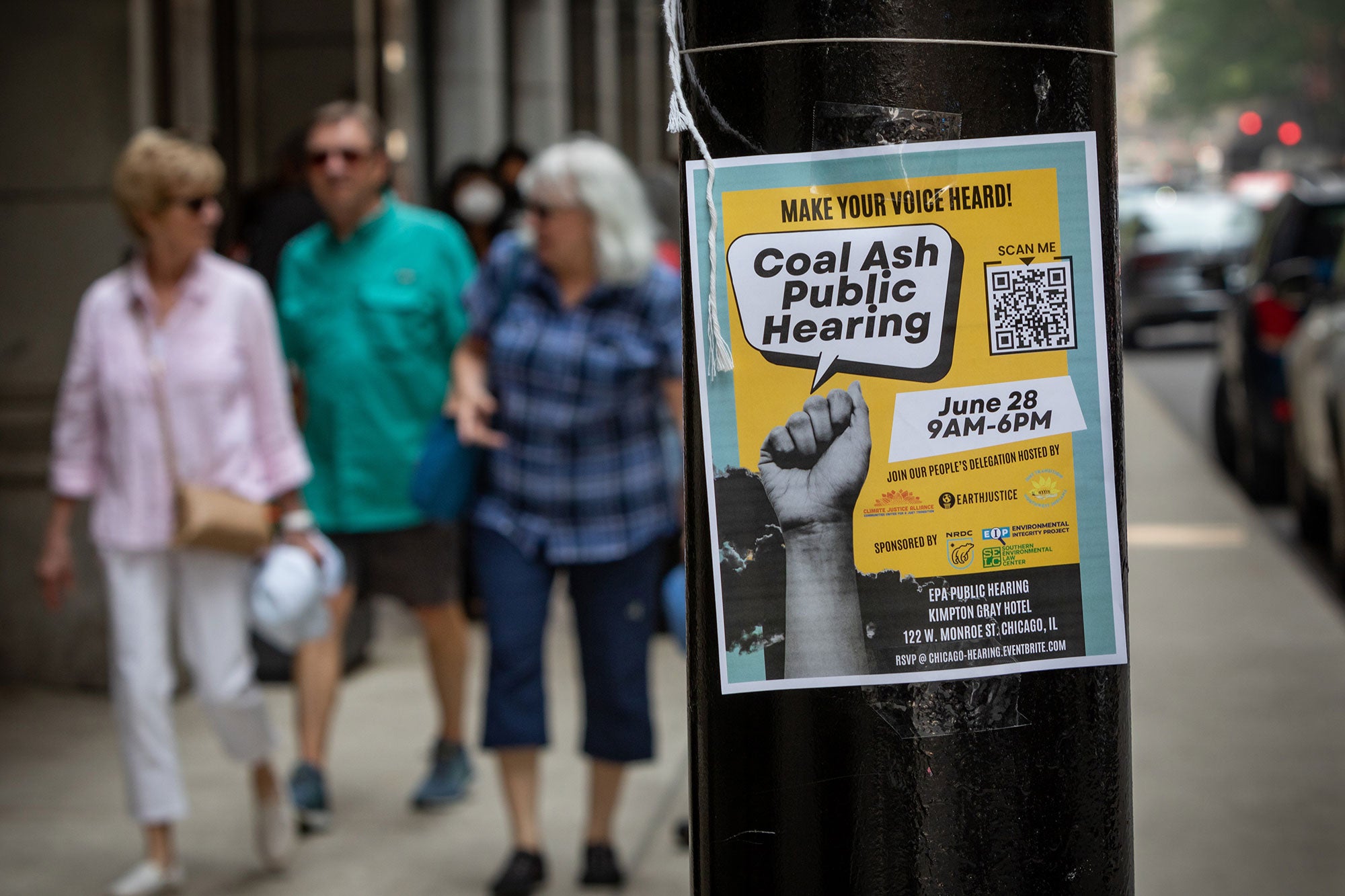
Earthjustice fights in the courts for a long-term solution to the toxic menace of coal ash. And we act on behalf of dozens of clients and over 100 coalition partners to defeat legislative attempts to subvert federally enforceable safeguards of coal ash.
Earthjustice’s Clean Energy Program uses the power of the law and the strength of partnership to accelerate the transition to 100% clean energy.
